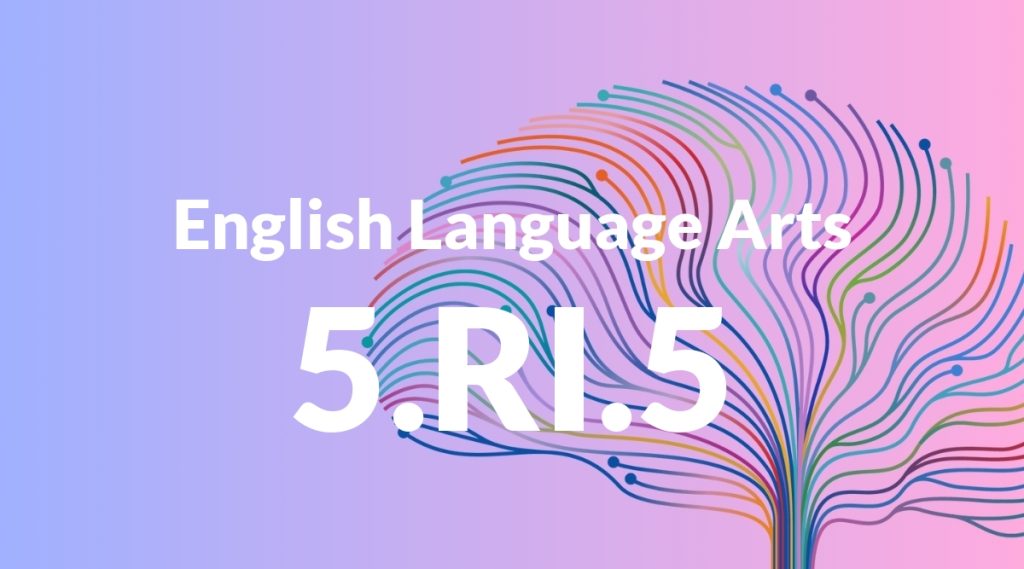Standard: 5.RI.5 – Compare and contrast the overall structure (e.g., chronology, comparison, cause/effect, problem/solution) of events, ideas, concepts, or information in two or more texts.
Grade level: Grade 5
Subject: English Language Arts
Domain: Reading: Informational Text
Teacher Overview
This standard focuses on students’ ability to compare and contrast the overall structure of events, ideas, concepts, or information in two or more texts. Understanding text structure is crucial as it helps students better comprehend and analyze informational texts, which are essential skills for academic success and real-world applications. Before tackling this standard, students should be familiar with different text structures and be able to identify main ideas and supporting details in a text.
After mastering this standard, students will be able to critically analyze and evaluate the effectiveness of different text structures in conveying information. They will also be prepared to write their own informational texts using these structures.
Common Misconception 1
A common misconception is that all informational texts follow the same structure. This is incorrect because informational texts can vary widely in structure, such as chronological order, cause/effect, or problem/solution, and recognizing these differences is crucial for understanding the text.
Intervention 1
To address this misconception, provide students with a variety of informational texts and explicitly discuss the differences in their structures. Use graphic organizers to help students visualize and compare these structures.
Common Misconception 2
Another misconception is that the structure of a text does not affect its meaning or effectiveness. This is incorrect because the structure of a text plays a significant role in how information is presented and understood.
Intervention 2
Engage students in activities where they rewrite a text in a different structure and compare the effectiveness of each version. Discuss how the meaning and clarity of the information change with different structures.
Prerequisite Knowledge
Students should have a basic understanding of different text structures such as chronology, comparison, cause/effect, and problem/solution. They should also be familiar with identifying main ideas and supporting details in a text.
Subsequent Knowledge
After mastering this standard, students will be able to critically analyze and evaluate the effectiveness of different text structures in conveying information. They will also be prepared to write their own informational texts using these structures.
Instructional Activities
- Use graphic organizers to compare and contrast text structures.
- Analyze paired texts with different structures and discuss their effectiveness.
- Rewrite a passage in a different text structure and compare the results.
- Create a chart of text structure examples and their characteristics.
- Group discussions on how different structures impact the understanding of information.




